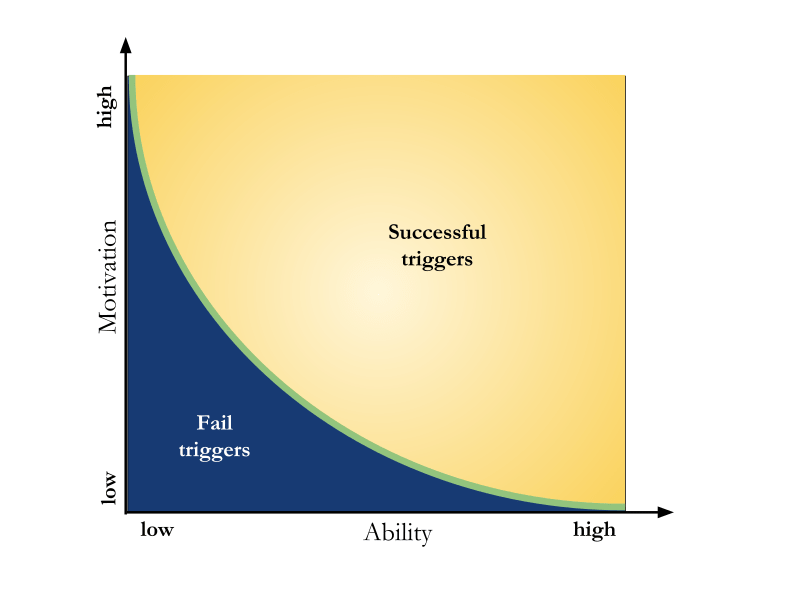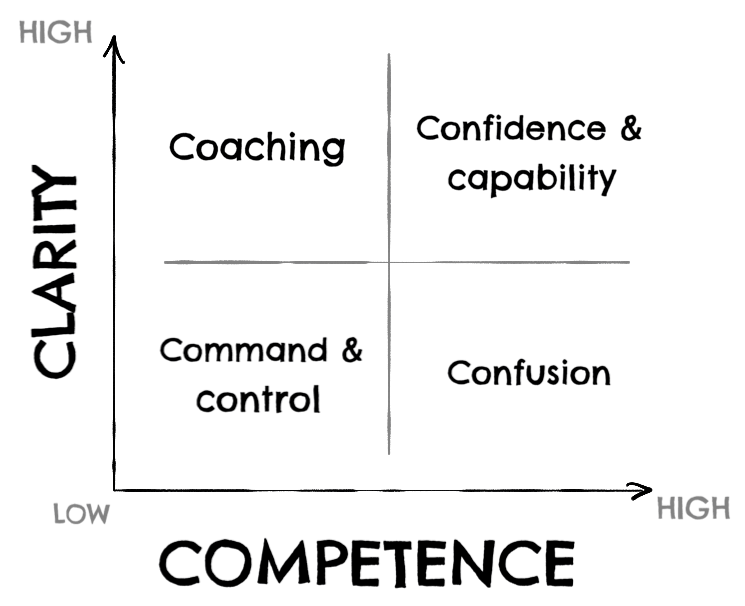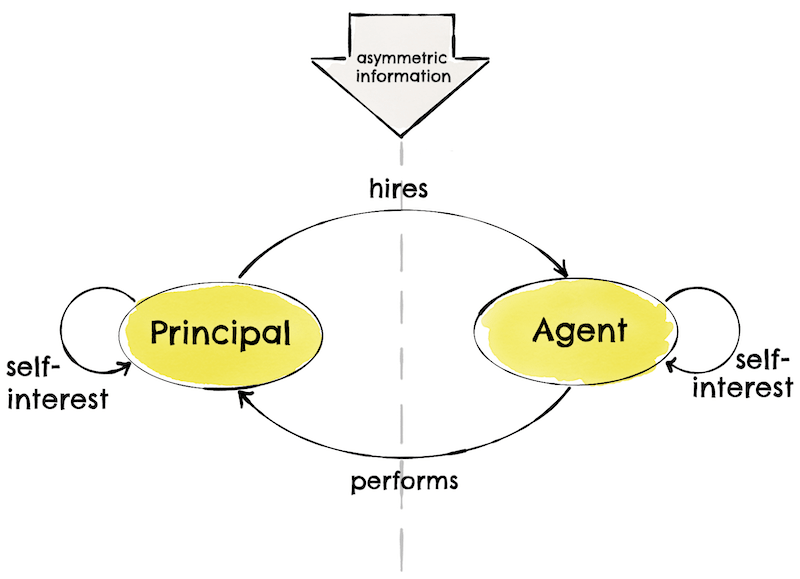Book notes: Unlearn: Let Go of Past Success to Achieve Extraordinary Results
Book notes on "Unlearn" by Barry O'Reilly

These are my notes on Unlearn: Let Go of Past Success to Achieve Extraordinary Results by Barry O’Reilly.
The book explains how to get over or not fall into the paradox of success: your once-successful strategies causing your downfall.
The second part of the book delves on how to apply unlearning to specific topics: management, customers, people, organizations, incentives, business and product innovation.
At the bottom of this blog you can find all the unlearn prompts that are in the book.
Key Insights
- The paradox of success: your once-successful strategies can cause your downfall.
- Disruption does not apply to organizations, it applies to individuals.
- Most external training fail, because people soon revert to the old ways of doing things.
- Safety has been proven to be a leading indicator for high performance.
- Especially psychological safety.
- Motion is mistaken for progress.
- Do not wait for the perfect moment to start. There will never be one.
- From Obstacles to unlearn:
- Our desire to be always correct:
- School system creates fear of having the wrong answers.
- This is reinforced in culture and corporate.
- Our desire to be always correct:
- Think BIG, start small.
Daring is failing:
If we are brave enough often enough, we will fail; this is the physics of vulnerability. Brené Brown, Rising Strong
- When experimenting:
- celebrate, regardless of result.
- the only true failure is the failure to learn.
- The simple act of starting is progress.
- We all love being busy, it equates to:
- Hard, real, important work.
- Committed employee.
- Clarity is the responsibility of leadership.
- Control is created not by telling people what to do but by designing feedback loops into the system of work to help team measure against the outcomes they are achieving, how they are moving towards them, and what they are learning along the way.
- Scaling yourself does not work; scaling your lessons learned does.
- The purpose of a learning organization is to help others make better mistakes, not the same mistakes.
- Clarity: Leaders need to define a system-level outcome, a purpose, and a mission that people can believe in, clearly understand, and are motivated to achieve. Then they must ensure that individuals can see alignment with what they want to achieve, their contribution, and the system-level outcomes they are impacting.
- Manager often claim that it is too hard to measure system-level outcomes, so they dont.
- Biggest obstacles to transformation are organization culture, leadership and strategy.
TOC
- Introduction
- Why Unlearn?
- How to Unlearn
- Unlearning the Obstacles to Unlearning
- Unlearn
- Relearn
- Breakthrough
- Unlearning Management
- Unlearning with Customers
- Unlearning with People and Organizations
- Unlearning Incentives
- Unlearning with Business and Product Innovation
- Conclusion
- All unlearning prompts
Introduction
- The paradox of success: your once-successful strategies can cause your downfall.
- Inability of unlearn is a significant inhibitor of high-performers.
- It is not difficult to learn more, but to know what to unlearn, what to throw away.
- Unlearn: the conscious act of letting go of outdated information and actively gather and taking in new information to inform effective decision-making and action.
Why Unlearn?
You must unlearn what you have learned Master Yoda
- The idea of learning organization exploded with Peter Senge’s The Fifth Discipline. Laws of System Thinking:
- Today’s problems come from yesterday’s “solutions”.
- The harder you push, the harder the system pushes back.
- Behavior grows better before it grows worse.
- The easy way out usually leads back in.
- The cure can be worse than the disease.
- Faster is slower.
- Cause and effect are not closely related in time and space.
- Small changes can produce big results, but the ares of highest leverage are often the least obvious.
- You can have your cake and eat it too, bot not at once.
- Dividing an elephant in half does not produce two small elephants.
- There is no blame.
- Disruption does not apply to organizations, it applies to individuals.
How to Unlearn
- Many leaders never have the time to just think.
- Motion is mistaken for progress.
- Most external training fail, because people soon revert to the old ways of doing things.

- Steps:
- Unlearn. Clarify the why and what:
- Why exactly do you want to unlearn?
- What specifically do you want to unlearn?
- Relearn:
- Build confidence, capability and momentum.
- Challenge your beliefs.
- Small safe experiments.
- Safety has been proven to be a leading indicator for high performance.
- Especially psychological safety.
- Breakthrough:
- The way to think differently is to act differently.
- Unlearn. Clarify the why and what:
- Unlearning is ongoing and continuous.
- Customer feedback is the most authoritative and objective guide through the uncertainty inherent in innovation.
- When you should unlearn? Always.
Unlearning the Obstacles to Unlearning
- Obstacles:
- Our leadership conditioning:
- Vulnerability and failure goes against it.
- Status-quo leadership: apply the same methods and models everywhere you go, regardless of the new context.
- 84% of business transformations fail, primary due to leadership not being prepared to change their own behaviour.
- Our knowledge threshold.
- Our biases.
- Our desire to be always correct:
- School system creates fear of having the wrong answers. This is reinforced in culture and corporate.
- Our focus on reward and recognition.
- Our inability to deal with uncertainty and risk.
- Our lack of curiosity.
- Our environment:
- What you environments values, we value.
- Our leadership conditioning:
- The more successful people are, the more fearful they become to try new untested things.
- The problem with transformation is never the lack of ideas, it is the lack of change in behaviour.
Unlearn
- Necessary conditions:
- Identify a Challenge you wish to address:
- If you cannot decide, consider what challenges you are avoiding, where you take the easy option, when you are not living up to your expectations.
- Do not wait for the perfect moment to start. There will never be one.
- Define success as though you have conquered the challenge:
- Tell yourself the story:
- Stories describe behaviours, which are observable, hence measurable, hence can be used as evidence of unlearning.
- Think BIG!
- Unlearn statement:
- I will unlearn
before . - I know I have when
- Constraint:
- Timeframe.
- Effort.
- Amount of investment.
- I will unlearn
- Alternative: define failure and flip it.
- Channel courage over seeking comfort:
- Rising Strong by Brené Brown:
- If we are brave enough often enough, we will fail; this is the physics of vulnerability.
- Safe to fail: think big, start small.
- Rising Strong by Brené Brown:
- Commit to, start and scale the cycle of unlearning.
- Identify a Challenge you wish to address:
Relearn
- Upper management spend 50% on meetings, of which 67% are deemed as failures.
- Necessary conditions:
- You have though big, now create options for small steps.
- Behavioural Design by Bj Fogg:
- List as many options as possible.
- Pick one and execute one that most likely move you forward.
- Celebrate, regardless of result.
- The simple act of starting is progress.
- Behavioural Design by Bj Fogg:
- Find the right behaviour that aligns to your level of motivation and ability.
- Called Behaviour matching in Behavioural Design.
- Starting small is even smaller than you think.
- You have though big, now create options for small steps.
- Bj Fogg:
- Maxim #1: help people do what they already want to do.
- Maxim #2: Help people feel successful.
- Tiny Habits:
- Make something really easy to do, and then use your existing routine as a prompt for a new behaviour.
- Behaviour Model:
- B = MAP. Behaviour = motivation * ability * prompt.
- Core motivators:
- Sensation: Pleasure/Pain.
- Anticipation: Hope/Fear.
- Belonging: Acceptance/Rejection.
- Increase ability with either:
- Training.
- New tool or resource.
- Make target behaviour easier to do:
- Time.
- Money.
- Physical effort.
- Mental effort.
- Matching existing routines.
- Kinds of prompts:
- Facilitator: high motivation, low ability.
- Spark: high ability, low motivation.
- Signal: high ability, high motivation.
- BehaviorModel.org

Image attribution: BJ Fogg Behavior Model (CC BY-NC-SA 4.0) by Goodmanguy
Breakthrough
- We all love being busy, equates to:
- Hard, real, important work.
- Committed employee.
- Necessary conditions:
- Reflect.
- Feed forward learnings to the next experiment:
- The benefits become exponential.
- Measure outcomes over outputs.
- When experimenting, the only true failure is the failure to learn.
- Align impact and increase safety to scale breakthroughs.
- Five key dynamics for successful teams from Google’s Aristotle project:
- Psychological safety.
- Dependability.
- Structure and clarity.
- Meaning of work.
- Impact of work.
- Five key dynamics for successful teams from Google’s Aristotle project:
- Increase your rate of unlearning.
Unlearning Management
- The role of leadership is to provide context for what is to be achieved, and why that matters, and then create a system of work that enables people to identify how to achieve those outcomes.
- Clarity is the responsibility of leadership.
- Clarity vs Competence matrix:

- The Ladder of Leadership, David Marquet, Turn the Ship Around:
| Level | Worker says | Boss says |
|---|---|---|
| 7 | I’ve been doing … | What have you been doing? |
| 6 | I’ve done … | What have you done? |
| 5 | I intent to … | What do you intent to do? |
| 4 | I would like to … | What would you like to do? |
| 3 | I think … | What do you think? |
| 2 | I see … | What do you see? Tell me more. |
| 1 | Tell me what to do | I will tell you what to do. |
- Both leader and worker move up the ladder together.
- Control is created not by telling people what to do but by designing feedback loops into the system of work to help team measure against the outcomes they are achieving, how they are moving towards them, and what they are learning along the way.
- AWS as an example of scaling leadership.
- Move decision-making authority and accountability to where the information is richest, and to the people closest to it.
- Loads of advise similar those in Becoming a Technical Leader, The Lean Mindset and Level Up.
Unlearning with Customers
- Direct, raw, unfiltered feedback from customers is invariably better, less biased and richer than reports from within the company.
- Companies have two customers:
- People that you sell to.
- Employees.
- When customers reach out, and they know they’re being heard, and they know that their feedback is going to improve the product, they become more loyal to the product and to the company. They become your marketing team.
Unlearning with People and Organizations
- To succeed in the long run, organizations and the people with in them must constantly be stimulated, and the capability of the organization system of work continuously improved.
- Normalization of deviance: unsafe practice comes to be considered normal if it does not immediately cause a catastrophe.
- Organization transformation is the result of collective individual transformation of both leaders and workers.
- It is continuous.
- “Mistakes were occurring regularly, but they were not openly talked about.”
- Policies and guidelines written by employees (experienced practitioners) for employees.
- Scaling yourself does not work; scaling your lessons learned does.
- As a leader, your responsibility is to enable organizational learning by reducing learning anxiety across the entire organization.
- The purpose of a learning organization is to help others make better mistakes, not the same mistakes.
- Chaos engineering.
- Dimensions of the Learning Organization Questionnare by Victoria Marsick and Karen Watkins:
- Create continuous learning opportunities:
- Learn on the job.
- Promote inquiry and dialogue.
- Encourage collaboration and team learning:
- work and learn in a team, as a team.
- Create systems to capture and share learning.
- Empower people toward a collective vision.
- Connect the organization to its environment:
- people see the effect of their work in the organization.
- Provide strategic leadership for learning:
- leaders model, champion and support learning.
- Create continuous learning opportunities:
- Steps to scale sustainable learning in page 150.
- Give people opportunities to deliberately practice new behaviours.
Unlearning Incentives
The iron rule of nature is: you get what you reward for Charlie Munger
- The incentives in most organizations favor short-termism, local optimization, and what’s easy to measure – practices that work against long-term success.
- Clarity: Leaders need to define a system-level outcome, a purpose, and a mission that people can believe in, clearly understand, and are motivated to achieve. Then they must ensure that individuals can see alignment with what they want to achieve, their contribution, and the system-level outcomes they are impacting.
- Manager often claim that it is too hard to measure system-level outcomes, so they dont.
- Bengt Holmström + Oliver Hart, Nobel Prize in Economics, principal-agent problem:
- How to motivate the agent to act on behalf of the principal.
- Principal rarely sees the effort the agent put.
- The principal judge the effort based on outcomes:
- Successful outcomes == high effort and motivation.
- Unsuccessful outcomes == low effort and motivation.
- Time devoted to quality versus quantity of output ultimately determines performance.

- Must incentivize hard-to-measure tasks that lead to desired system-level outcomes, not easy-to-measure tasks.
- What if there were no incentives?
- Clary of purpose, alignment and appreciation may be enough.
- What if there needs to be an incentive?
- Small bonus can have a significant effect.
- Also personal development, career paths, family flexibility.
- Pay for performance is the problem.
- What motivates people? (TINY Pulse 200k people survey):
- Camaraderie, peer motivation (20%).
- Intrinsic desire to do a good job (17%).
- Feeling encouraged and recognized (13%).
- Having a real impact (10%).
- Growning professionally (8%).
- Meeting customer needs (8%).
- Money (7%).
- Positive supervisor (4%).
- Believing in the company (4%).
- When organizations want to achieve breakthroughs, they must first define the system-level outcomes the company is trying to achieve.
- Then communicate clearly, ensure people understand them and measure them.
Unlearning with Business and Product Innovation
- DevOps practices.
- Unlearning bad behaviours is harder than learning them in the first place.
- Biggest obstacles to transformation are organization culture, leadership and strategy.
Conclusion
- Turn obstacles into opportunities.
All unlearning prompts
The book contains a series of prompts to start your unlearning. Here are all for easy reference:
- How to unlearn:
- Where are you falling short of your expectations?
- Where are you not seeing the outcomes you want?
- What are you willing to do to affect those outcomes?
- How could you get out of your comfort zone and succeed?
- What would think big but starting small be for you?
- Breakthrough:
- How do you, your team, and your leadership measure success? By outputs or outcomes?
- Is it clear to you what outcomes your effort is effecting in your current initiative?
- How successful do you feel in contributing towards those outcomes?
- How could you better tie your effort to the initiative outcomes?
- Unlearn management:
- When was the last time you truly unlearned how you lead?
- Did you recognize it, seek to uncover it, or be informed of it?
- How might you discover your unconscious incompetencies or the breakthroughs in your behaviour and perspective tha you need?
- How could you make your unlearning more intentional?
- What is the first small step you could take to get started?
- Think of the teams you currently lead or are a part of (Clarity vs Competence matrix):
- Where would you place each of the teams you lead? Or imagine where your manager would place you?
- Where do you need to be?
- What could be one small step, one new behaviour, you try to move there?
- Unlearning with Customers:
- As a leader:
- How do you gather information against your vision, strategy, and product and services and how they are performing?
- What feedback streams do you have in place for both your external and internal customers? How effective are they?
- When is the last time the information you gathered offered new insight into how your product and services were performing or could be innovated? How intentional was it?
- How could you sue the information you gather to inform your Cycle of Unlearning, and unlearn your customers’ limiting company policies, practices, and strategies?
- As a leader:
- Unlearning incentives:
- What metrics do you monitor?
- What signals do the metrics you monitor send to teams?
- Are they easy or hard to measure?
- Are they system- or local-level outcomes?
- How can you tie your effort to the system-level outcomes the project is aiming to achieve?
- If you improved all the easy-to-measure tasks, what impact would this have on your system-level outcomes?